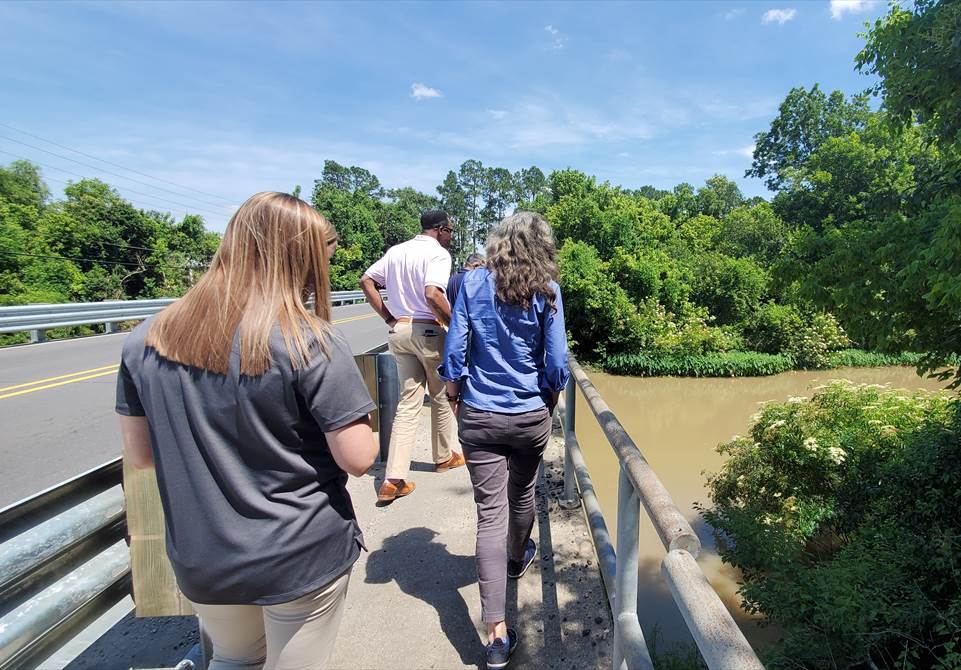Today, the U.S. House of Representatives passed the Fixing America’s Surface Transportation Act (FAST Act), which is the final transportation agreement negotiated between the House and Senate. Once the Senate passes the agreement, expected by early next week, a new five-year transportation law will be in effect.
Resource Library
This guide is designed to help schools respond the the special nutrition concerns of low-income students in their wellness policies, including through increasing physical activity and recreational opportunities.
This paper explores the connection between home values andwalkability, as measured by the Walk Score algorithm.
At a recent grantmaking conference, one of the speakers emphasized the role of evaluation by saying that if you can’t measure something, it doesn’t matter. Thanks to a new rule from the US Department of Transportation, all states will now be required to measure and be held accountable for bicycle and pedestrian safety.
This blog post was written by the Safe Routes Partnership's research reviewer, Christina Galardi.
“It’s just like riding a bike.”
This is an expression we often use to refer to a learned skill that comes naturally and is retained for a lifetime.
But how do you learn to ride a bike—and do so safely—in the first place?

This blog post was authored by Safe Routes Partnership research advisor Christina Galardi.
Measuring Sprawl 2014 examines how some places in the United States are sprawling out and some places are building in compact, connected ways.
 Welcome to the new website of the Safe Routes Partnership! The beginning of a new year seems to be the perfect time for a change to the Safe Routes Partnership’s website. The new color scheme, graphics and wonderful photos now reflect the vibrancy and energy of the national Safe Routes to School movement.
Welcome to the new website of the Safe Routes Partnership! The beginning of a new year seems to be the perfect time for a change to the Safe Routes Partnership’s website. The new color scheme, graphics and wonderful photos now reflect the vibrancy and energy of the national Safe Routes to School movement.
 It is an exciting time of new beginnings and opportunity - the beginning of my role as network director, a new blog and a huge expansion of the Safe Routes Partnership.
It is an exciting time of new beginnings and opportunity - the beginning of my role as network director, a new blog and a huge expansion of the Safe Routes Partnership.
 When I was about eight years old I decided to start a lemonade stand. My stand, which was rudimentary in design, included the front steps of my house, a pitcher of watered down lemonade and no cups.
When I was about eight years old I decided to start a lemonade stand. My stand, which was rudimentary in design, included the front steps of my house, a pitcher of watered down lemonade and no cups.
 March has been quite a month for Congressional action on the transportation bill. Unfortunately, it is looking like the momentum will have a tough time carrying over into April.
March has been quite a month for Congressional action on the transportation bill. Unfortunately, it is looking like the momentum will have a tough time carrying over into April.
 In 2008 and 2009 we managed a Safe Routes to School project at five lower income schools around the country, launching and growing Safe Routes to School programs in those five schools for two years.
In 2008 and 2009 we managed a Safe Routes to School project at five lower income schools around the country, launching and growing Safe Routes to School programs in those five schools for two years.
 Both the House and Senate have decided to get down to business on a transportation bill.
Both the House and Senate have decided to get down to business on a transportation bill.
 We love it when Safe Routes to School volunteers and champions share what is happening in their community with us!
We love it when Safe Routes to School volunteers and champions share what is happening in their community with us!
The Indiana Safe Routes to School program is alive and well! Having completed six application rounds since its inception in 2006, there are now 114 infrastructure projects and non-infrastructure activities that have been awarded funding in the Hoosier State. For a map of Indiana’s Safe Routes to School awards click here.
All Safe Routes to School programs benefit from evaluation. Thoughtful data collection and analysis helps communities to identify issues, appropriate strategies to address those issues, set goals, and determine results. Data collected can further influence funding by providing a fuller picture of community needs and prospective projects.
In our upcoming September webinar, we will delve into tools to support your funding applications and existing programs. The one-hour session will include an overview of Colorado’s EnviroScreen, an interactive environmental justice mapping and health screening tool developed for the Colorado Department of Public Health and Environment (CDPHE). This dynamic resource enables users to identify areas with current and past environmental inequities, pinpoint areas where disproportionately impacted communities have a greater health burden and/or face more environmental risks and identify geographic areas that meet the definition of disproportionately impacted communities under Colorado law.
Additionally, given the closure of the National Safe Routes to School Data System, we will be discussing new means of recording student travel tallies and parent surveys. This data is a required component for Colorado Safe Routes to School grant applications. All those interested in submitting applications for our upcoming Colorado Safe Routes to grant cycle, join us as we share our suggestions to help you prepare your best submission!
*Note: While this webinar is designed to give an overview of tools available for evaluation within your program, special attention will be given to attendees preparing a Colorado Safe Routes to School FY 25 Application.
 Safe Routes to School is about walking and bicycling to school and in communities. The Safe Routes to School momentum spreads to players at all levels. There are only three communities with designated Safe Routes to School coordinators in the Greater Washington, DC region.
Safe Routes to School is about walking and bicycling to school and in communities. The Safe Routes to School momentum spreads to players at all levels. There are only three communities with designated Safe Routes to School coordinators in the Greater Washington, DC region.




 Our work to expand the region’s Active Transportation program at the Southern California Association of Governments (SCAG) is progressing.
Our work to expand the region’s Active Transportation program at the Southern California Association of Governments (SCAG) is progressing.